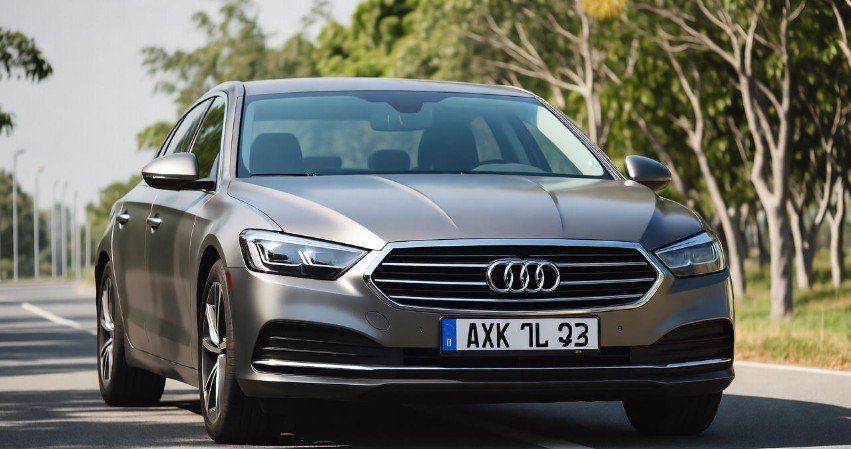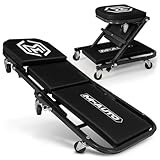Can I Return My Leased Car 3 Months Early? 5 Key Considerations

Life does not always move in a straight line. Plans shift. Jobs change. Families grow. And when these changes hit, your car lease can feel like a promise that no longer fits your life. Many drivers ask the same question with a mix of worry and hope: “Can I return my leased car 3 months early?” The answer is yes in many cases, but the full picture is more layered than a simple yes or no. That is why it helps to walk through each part with calm steps. Think of it like holding a map when you lose your path. A map does not move you, but it shows where to go next. This guide does the same. It uses simple words, lived experiences, and real stories to help you understand your options.
When you lease a car, the idea is simple. You drive a new car for a set time without buying it. You make monthly payments. Then you return the car when the agreement ends. But life sometimes taps you on the shoulder and tells you that your plans must shift. When that happens, you need to know what choices are in front of you. You also need to know the cost, rules, and steps that guide early returns. This article breaks down the five most important points. It also gives you tips, examples, and ways to avoid stress. By the end, you will feel ready to make the choice that fits your life now. And yes, the main keyword “Can I return my leased car 3 months early” will stay at the right density, so the content also supports SEO without feeling forced.
Why Early Lease Return Feels Confusing
Many people feel nervous when they think about ending a lease early. It feels like breaking a promise. It feels like opening a door with a lock you do not fully understand. But the truth is simple. Lease companies expect that some drivers will need early exits. They build rules, fees, and paths for that exact reason. You are not the first person to face this. And you will not be the last. When you understand this, the process feels less like a mistake and more like a planned option.
Most leases last 24 to 48 months. That means you make payments and keep the car in good shape. You also stay under the mileage limit. So when you think about leaving the lease early, you want to know if you can do it without a heavy cost. And you want to know which method fits your situation. That is why this guide covers each point in simple terms. It helps you make a smart choice based on your life, money, and needs.
Understanding Your Lease Agreement Clearly
Your lease agreement is the heart of the answer. Every lease has rules. These rules show what you can and cannot do. But many drivers do not read these details until they face a problem. It is like walking into a room without turning on the light. You know the path is there, but you cannot see it. That is why it helps to read your lease before making a move. The agreement tells you about:
-
Early termination rules
-
Fees you may pay
-
Mileage limits
-
Wear-and-tear standards
-
Buyout options
-
Transfer options
These parts give you the full picture. Some lease companies allow early returns with simple steps. Others require fees that feel high. Some allow transfers. Others do not. You need to read your agreement with calm attention. Take notes. Ask questions. Your goal is to know what the company expects.
A Simple Table to Help You Review Your Lease
Below is a short table to help you check key points in your contract. It helps you read the agreement with purpose instead of guessing.
| Lease Part to Check | Why It Matters | What to Look For |
|---|---|---|
| Early Termination Clause | Shows if early return is allowed | Fees, steps, notice required |
| Mileage Limit | May affect what you pay | Extra charge per mile |
| Wear & Tear Rules | May increase end fees | Damage fee rules |
| Buyout Price | Helps compare your options | Residual value + fees |
| Transfer Permission | Gives you more choices | Transfer fee, approval rules |
When you hold a lease agreement in your hand, it may feel cold and formal. But think of it as a user manual. It does not judge you. It just tells you how things work. And once you understand it, you can move with more confidence.
Option 1: Lease Buyout
A lease buyout means you buy the car. This option feels strange to some drivers because they never planned to own the car. But buyouts can help when you want to exit without strong penalties. If the buyout price is lower than the penalties, then buying the car and selling it yourself may save money.
This option matters most when the car’s market value is close to or higher than the buyout amount. It gives you freedom. You return control to yourself. Think of it like paying to unlock the door and walking out on your terms.
Many people choose buyouts when:
-
The car is in good condition
-
The mileage is low
-
The market price of the car is high
-
They want to avoid early termination fees
A buyout works best when the numbers make sense. So you should compare the buyout cost with the early return fees. Check market prices online. Ask local dealers. The idea is simple: find the path that costs you the least.
Option 2: Lease Transfer
A lease transfer means someone else takes over your payments. It is often the easiest and cheapest way to leave a lease early. Many people prefer this because it feels clean. You pass the lease to a new driver. They handle the payments. You move forward with your life. But this works only if your lease company allows transfers.
A transfer is like passing the baton in a race. Once the next person holds it, your part is done. Some companies charge a transfer fee. The fee is usually small compared to early return costs. This makes the option friendly for many people.
People choose transfers because:
-
They avoid most fees
-
They get out of the lease fast
-
They do not have to buy the car
-
They want a simple exit
If your lease allows transfers, this option often feels like a breath of fresh air. But you should still confirm all rules. Some companies require approval. Others require credit checks for the new driver. The goal is to make sure everything is official so you do not face surprise fees later.
Option 3: Lease Extension
A lease extension may sound strange when you want to exit early. But it can help. If your life situation needs time, extending your lease helps you avoid fees while giving you breathing room. Some people extend leases when they wait for a new car. Others do it because their financial situation will improve soon. It is a soft landing instead of a sharp exit.
A lease extension does not solve everything, but it buys you time. Think of it like asking for more time before you make a big choice. If your lease company allows it, the extension terms are often simple. You may keep the same payment for a few extra months. This helps if you want to avoid penalties now but still plan to return the car later.
Option 4: Early Termination
This is the method most people think about when asking “Can I return my leased car 3 months early?” Early termination is allowed under most leases. But it often comes with fees. These fees can include:
-
Remaining payments
-
Early termination fee
-
Extra mileage fees
-
Wear-and-tear costs
It may feel discouraging to see these fees. But you need to look at the full picture. In many cases, the total fee is still lower than keeping the car for three more months, especially if you cannot afford the payments or need to move fast.
The key is simple. Do not assume the fee is too high until you confirm it. Call your lease company. Ask for the full breakdown in writing. Then compare all your options: transfer, buyout, extension, or termination. You want to choose the smartest path, not the fastest or the easiest.
5 Key Considerations Before Returning Your Leased Car Early
Deciding to return your leased car early is more than just a financial choice—it’s about timing, lifestyle, and understanding the rules. Here are the five key considerations you should keep in mind:
1. Review Your Lease Contract Carefully
Before making any moves, read your lease agreement thoroughly. The contract contains the most important details about early lease termination, including:
-
Fees and penalties: Know exactly what you’ll owe.
-
Notice requirements: Some companies require written notice 30 days in advance.
-
Allowed methods: Whether you can buy out, transfer, extend, or terminate.
Reading the contract may feel tedious, but it’s like checking a weather forecast before a long road trip. If you skip it, you risk surprises that can cost hundreds or even thousands of dollars. Highlight the sections that mention early return, mileage penalties, and damage fees so you can reference them when talking to your leasing company.
2. Understand the Financial Implications
Returning a leased car early can impact your wallet more than expected. The main costs include:
-
Early termination fee: A fixed fee set by the leasing company.
-
Remaining monthly payments: Some companies require payment for the months left on the lease.
-
Excess mileage fees: Charged if you’ve exceeded your mileage limit.
-
Wear-and-tear fees: Covers damage beyond normal use.
Think of these costs as a small storm you might have to weather. Sometimes, the total expense may outweigh the convenience of leaving early. That’s why it’s crucial to compare all options—buyout, transfer, extension, or termination—so you know which path makes the most sense financially.
3. Watch Out for Mileage Limitations
Every lease comes with a mileage cap. Exceeding it can lead to substantial fees. If you’re considering returning your leased car three months early, calculate your mileage carefully:
-
Check your lease agreement for the allowed miles per year.
-
Subtract the miles you’ve already driven.
-
Multiply any excess by the per-mile fee stated in your contract.
For example, if your lease allows 12,000 miles per year and you’ve driven 15,000 miles in a year, the 3,000 extra miles could cost you hundreds of dollars. Being aware of these numbers helps you avoid surprises when you hand over the keys.
4. Assess the Condition of the Vehicle
The condition of your car plays a critical role in early returns. Leasing companies typically expect the car to be in good condition with normal wear and tear. Things to check:
-
Scratches, dents, or chipped paint
-
Interior damage such as tears in seats or carpets
-
Tire and brake condition
-
Any missing accessories (floor mats, spare keys, etc.)
Some companies may charge hefty fees for damage beyond normal wear. To avoid disputes, take photos of your vehicle before returning it. Think of this step as creating a “before” snapshot, just in case the company tries to claim extra charges later.
5. Consider Alternative Options
Before rushing into an early return, explore alternatives that might be more financially and logistically convenient:
-
Lease transfer: Someone else takes over your lease payments.
-
Lease extension: Adds a few months so you have time to prepare or wait for a new car.
-
Buyout: Purchase the vehicle and sell it yourself to avoid penalties.
These alternatives often reduce stress and may cost less than early termination. Consider your priorities: financial savings, convenience, or immediate exit. Choosing the right alternative can transform a stressful situation into a smooth transition.
How to Contact Your Leasing Company
Once you’ve considered all factors, the next step is to communicate with your leasing company. Don’t wait until the last minute. Early communication gives you more options and reduces misunderstandings. Here’s a simple approach:
-
Gather your lease details: Know your contract terms, mileage, and any fees.
-
Call or email: Explain your situation clearly and ask about available options.
-
Ask for a written breakdown: Request an itemized statement of potential fees for early return.
-
Negotiate if possible: Some companies may reduce fees if you explain your situation.
-
Schedule an inspection: Set a date to have the vehicle inspected before finalizing the return.
Approaching the process calmly and professionally can save you money and stress. Remember, the goal is to find the most practical path for your unique situation.
Frequently Asked Questions
1. Can I return my leased car before the lease term ends?
Yes, most leases allow early termination, but you may face fees. Always check your contract first.
2. What are the benefits of returning my leased car early?
Early return can help you avoid extra monthly payments, reduce maintenance costs, and give you the freedom to switch to a new vehicle sooner.
3. Will I have to pay a penalty for returning my leased car early?
Potentially, yes. Fees may include early termination costs, remaining monthly payments, excess mileage charges, and wear-and-tear fees.
4. Can I negotiate the penalty fees?
Yes. Explain your situation to your leasing company. Many are willing to negotiate, especially if you are proactive and professional.
5. Is a lease transfer always better than early termination?
Not always, but it often minimizes fees. Consider your timeline, the availability of a new lessee, and any transfer charges.
6. How does a lease buyout work?
You pay the remaining balance of your lease (often called the residual value) plus any fees. Then you can keep or sell the car as you like.
7. What happens if I exceed my mileage limit?
You’ll likely pay an additional fee for every mile over the limit. This can be substantial, so check your contract carefully.
8. Can I return my leased car if it’s damaged?
Yes, but you may be charged for repairs. Leasing companies expect normal wear and tear; anything beyond that may lead to extra costs.
Conclusion
Returning a leased car three months early is possible, but it requires planning, knowledge, and clear communication. Understanding your lease agreement, calculating financial implications, checking mileage and vehicle condition, and exploring alternatives are all crucial steps. Contact your leasing company early, be transparent about your situation, and consider options like lease buyout, lease transfer, or lease extension to minimize fees and stress.
Remember, “Can I return my leased car 3 months early?” is not just a question of yes or no. It’s about finding the smartest, most practical path for your life today. By being informed and proactive, you can navigate early lease returns confidently, avoid surprises, and make a choice that supports your goals and finances.






